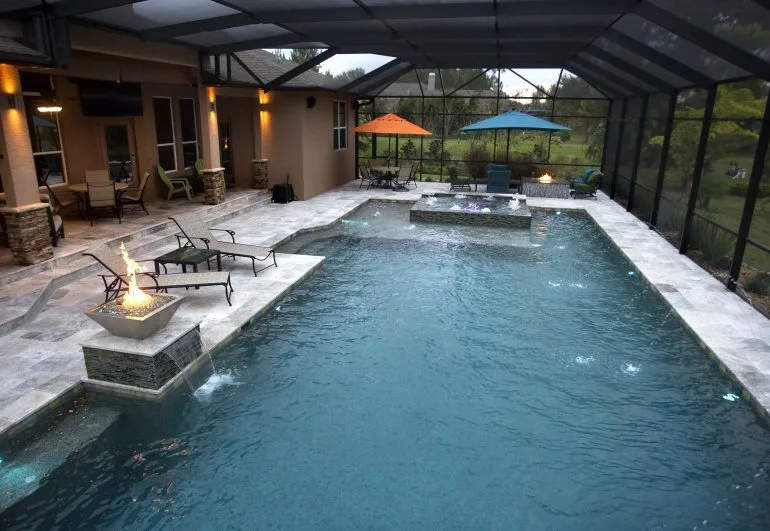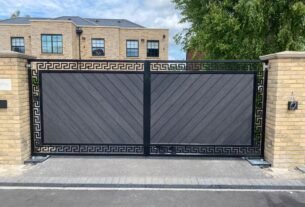Before embarking on a pool remodeling project, it’s crucial to assess the current condition of your pool. Start by inspecting the pool structure for any signs of cracks, leaks, or damage. Check the pool’s filtration and circulation systems to ensure they are functioning optimally. Additionally, examine the pool’s surface for stains, discoloration, or rough patches. By thoroughly evaluating your pool’s condition, you can identify areas that require attention during the remodeling process.
Assessing Your Pool
Identifying Areas for Improvement
During the assessment, take note of any areas that need improvement or updating. This could include outdated design elements, inefficient equipment, or safety concerns. Consider your long-term goals for the pool and prioritize enhancements that align with your vision. Whether it’s enhancing the pool’s aesthetics, improving functionality, or increasing energy efficiency, identifying areas for improvement is the first step towards achieving your desired outcome.
Setting Goals for the Remodeling Project
Based on your assessment, establish clear goals for the remodeling project. Determine what you hope to achieve with the renovation, whether it’s creating a more modern and stylish pool space, enhancing usability for family and guests, or reducing maintenance requirements. Setting specific and achievable goals will guide the design and planning process and ensure that the remodeling project meets your expectations.
Design and Planning
Exploring Design Options
Once you’ve assessed your pool and identified areas for improvement, it’s time to explore design options for your remodeled pool. Consider factors such as your personal style preferences, the existing layout of your backyard, and any specific features or amenities you’d like to incorporate. Whether you prefer a sleek and contemporary design or a more natural and rustic look, there are endless possibilities to customize your pool to suit your taste and lifestyle.
Factors to Consider in the Design Phase
During the design phase, it’s essential to consider various factors that will impact the outcome of your pool remodeling project. These may include your budget constraints, the available space in your backyard, local building codes and regulations, and the climatic conditions of your region. Collaborating with experienced pool designers or contractors can provide valuable insights and guidance to ensure that your design choices align with practical considerations and regulatory requirements.
Consulting with Professionals
While you may have a clear vision for your remodeled pool, consulting with professionals is essential to bring your ideas to life successfully. Pool designers, architects, and contractors have the expertise and experience to translate your vision into a feasible and structurally sound design. They can offer valuable advice on material selection, construction techniques, and cost-effective solutions to achieve your desired outcome within your budget and timeframe.
Upgrading Pool Features
Enhancing Functionality and Aesthetics
One of the primary goals of pool remodeling is to enhance the functionality and aesthetics of your outdoor space. Consider upgrading your pool with new features and amenities that will improve usability, comfort, and visual appeal. This could include adding water features like fountains or waterfalls, installing LED lighting for ambiance and safety, or incorporating built-in seating and lounging areas for relaxation and entertainment.
Options for Adding New Features
When upgrading your pool, explore a variety of options for adding new features that will enhance your swimming experience. From high-tech automation systems that allow you to control your pool’s operations remotely to energy-efficient heating and filtration systems that reduce maintenance costs, there are numerous innovations available to modernize your pool and make it more enjoyable and convenient to use.
Choosing Materials Wisely
When upgrading pool features, it’s essential to choose materials that are durable, low-maintenance, and aesthetically pleasing. Consider factors such as the climate and environmental conditions in your area, as well as your budget and design preferences. Whether you opt for natural stone coping, durable composite decking, or sleek glass mosaic tiles, selecting high-quality materials will ensure that your pool retains its beauty and functionality for years to come.
Repairing and Refurbishing
Addressing Structural Issues
Before making cosmetic upgrades to your pool, it’s essential to address any underlying structural issues or damage. Cracks in the pool’s surface, leaks in the plumbing system, or deterioration of the pool’s foundation can compromise its integrity and safety. Hiring a qualified pool contractor to inspect and repair these issues is crucial to ensure the long-term stability and durability of your remodeled pool.
Resurfacing the Pool
Over time, the surface of your pool may become worn, stained, or outdated. Resurfacing the pool is a cost-effective way to refresh its appearance and restore its functionality. Whether you choose plaster, aggregate, or tile finishes, resurfacing can provide a smooth and durable surface that enhances the aesthetic appeal of your pool while improving its resistance to stains, cracks, and algae growth.
Repairing or Replacing Equipment
In addition to cosmetic updates, it’s essential to address any worn-out or malfunctioning equipment during the pool remodeling process. From pumps and filters to heaters and lighting fixtures, regular maintenance and timely repairs are essential to ensure that your pool operates efficiently and safely. Consider upgrading to energy-efficient equipment to reduce operating costs and minimize environmental impact while enjoying improved performance and reliability.
Energy Efficiency and Sustainability
Incorporating Eco-Friendly Practices
As homeowners become more environmentally conscious, there is a growing demand for eco-friendly pool solutions that minimize water and energy consumption. Incorporating sustainable practices into your pool remodeling project can not only reduce your environmental footprint but also save you money on utility bills in the long run. Consider options such as solar heating systems, LED lighting, and water-saving filtration technologies to make your pool more eco-friendly and cost-effective to operate.
Benefits of Energy-Efficient Equipment
Investing in energy-efficient pool equipment offers several benefits beyond environmental sustainability. By reducing energy consumption, you can lower your utility bills and recoup the initial cost of investment over time. Energy-efficient pumps, heaters, and lighting fixtures also tend to be quieter, more durable, and less prone to breakdowns, resulting in fewer maintenance hassles and longer service life. Additionally, by conserving resources and minimizing waste, you can contribute to a healthier and more sustainable planet for future generations to enjoy.
Tips for Maintaining a Sustainable Pool Environment
Maintaining a sustainable pool environment requires ongoing attention and care to ensure that your eco-friendly practices are effective and sustainable over the long term. Regularly monitor and adjust your pool’s water chemistry to optimize filtration and sanitation while minimizing chemical usage. Keep your pool clean and debris-free to reduce the workload on your filtration system and prevent algae growth. Additionally, consider installing a pool cover to reduce evaporation and heat loss, further conserving water and energy resources.
Safety Considerations
Ensuring Compliance with Safety Regulations
When remodeling your pool, it’s essential to prioritize safety to protect your family and guests from accidents and injuries. Familiarize yourself with local building codes and safety regulations governing pool construction and maintenance to ensure compliance with legal requirements. This may include installing fencing and gates around the pool, adding safety covers or alarms, and maintaining proper water chemistry and sanitation levels to prevent the spread of waterborne illnesses.
Installing Safety Features
In addition to complying with regulatory requirements, consider installing additional safety features to further enhance the security of your pool environment. This could include non-slip decking surfaces to prevent slips and falls, handrails or grab bars for support and stability, and emergency equipment such as life rings or rescue poles for rapid response to emergencies. Educate your family members and guests about pool safety rules and practices to promote responsible behavior and prevent accidents.
Educating Family Members
Promoting pool safety is a collective responsibility that requires the cooperation and participation of everyone in your household. Take the time to educate your family members, especially children, about the potential hazards associated with swimming pools and the importance of following safety rules and guidelines. Teach them how to swim and float, establish clear boundaries and rules for pool use, and designate a responsible adult to supervise swimming activities at all times. By fostering a culture of safety and awareness, you can create a safe and enjoyable pool environment for everyone to enjoy.
Maintenance and Care
Developing a Maintenance Plan
Maintaining your remodeled pool in optimal condition requires a proactive approach to regular maintenance and care. Develop a comprehensive maintenance plan that outlines routine tasks such as cleaning, testing water chemistry, and inspecting equipment for signs of wear or damage. Schedule these tasks on a regular basis to ensure that your pool remains clean, safe, and properly functioning year-round.
Regular Cleaning and Upkeep
Regular cleaning and upkeep are essential to preserving the beauty and functionality of your remodeled pool. Skim the surface of the water daily to remove leaves, debris, and other contaminants that can accumulate and affect water quality. Vacuum the pool regularly to remove dirt and sediment from the bottom and walls, and brush the tile and grout to prevent algae growth and calcium buildup. Additionally, clean and backwash the filtration system as needed to maintain optimal water flow and clarity.
Scheduling Professional Inspections
In addition to regular maintenance tasks, schedule professional inspections and servicing of your pool equipment and systems to identify and address any issues before they escalate into costly repairs or replacements. A qualified pool technician can conduct a comprehensive assessment of your pool’s condition, test water chemistry, and inspect equipment for signs of wear, leaks, or malfunction. By addressing maintenance issues promptly, you can prolong the lifespan of your pool and ensure continued enjoyment for years to come.
Cost and Budgeting
Estimating Project Costs
Before embarking on a pool remodeling project, it’s essential to develop a realistic budget that takes into account all associated costs and expenses. Start by estimating the cost of materials, labor, and equipment needed to complete the renovation. Consider factors such as the size and complexity of the project, the quality of materials and finishes chosen, and any additional features or amenities you wish to include. Be sure to include a contingency fund to account for unexpected expenses or changes to the original plan.
Strategies for Budgeting
Once you’ve estimated the total project cost, develop a budgeting strategy to allocate funds efficiently and maximize value for money. Prioritize essential elements of the remodeling project, such as structural repairs and safety upgrades, before allocating funds to optional features and enhancements. Consider phased construction or DIY options for tasks that can be completed over time or with minimal professional assistance to reduce upfront costs. Be realistic about your financial limitations and avoid overspending by sticking to your budget and avoiding unnecessary extras.
Maximizing Value and ROI
While remodeling your pool can be a significant investment, it also has the potential to increase the value of your home and provide a high return on investment (ROI) in terms of enjoyment and lifestyle benefits. Choose upgrades and features that enhance the overall appeal and functionality of your pool while aligning with the preferences and expectations of potential buyers. Focus on improvements that offer the greatest value and longevity, such as energy-efficient equipment, durable materials, and timeless design elements, to maximize the resale value and appeal of your property in the long term.
Conclusion:
Pool remodeling offers a transformative opportunity to revitalize your outdoor space and create a stunning backyard oasis. By assessing your pool’s condition, exploring design options, and prioritizing safety and sustainability, you can embark on a remodeling journey that enhances both the beauty and functionality of your pool. With careful planning, budgeting, and execution, you can enjoy a refreshed and rejuvenated pool that brings years of joy and relaxation for you and your loved ones. Ready to dive in? Start your pool remodeling project today and turn your backyard dreams into reality!




